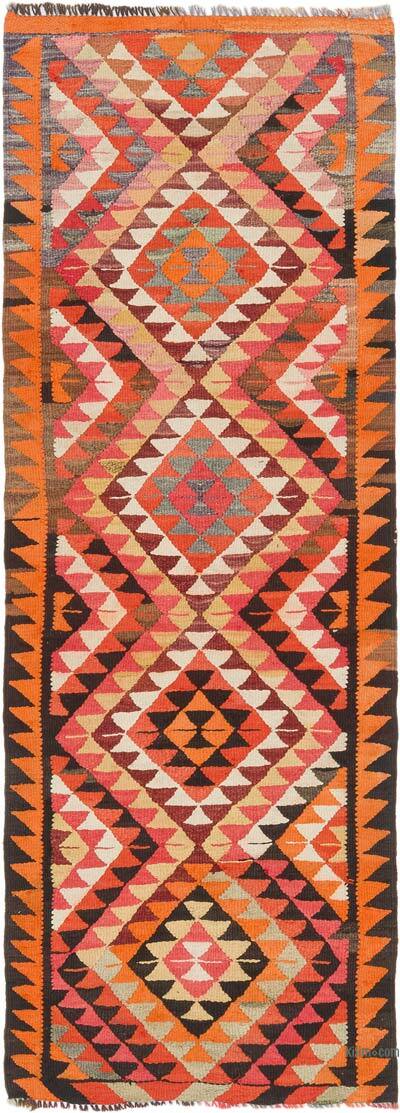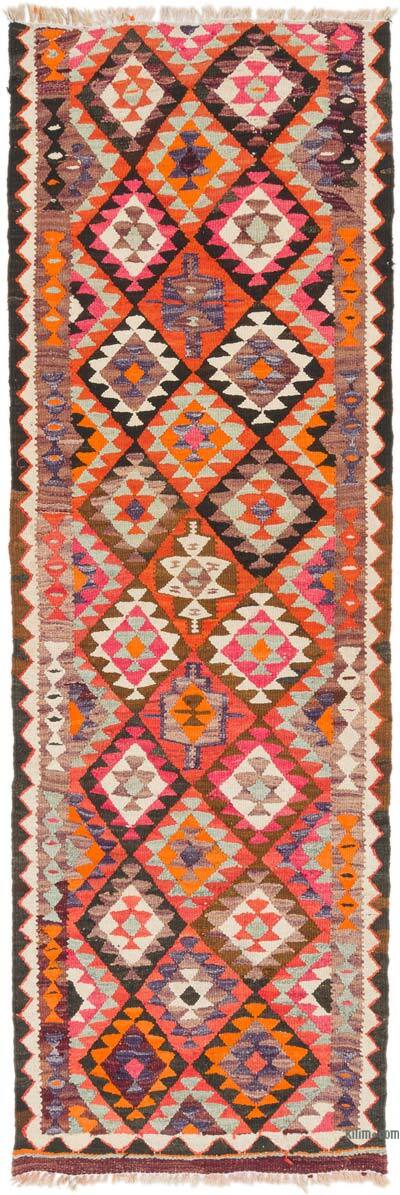Vintage Tribal Kilim Runner 2' 11" x 9' 7" (35" x 115")
This item has just been sold
Type:
Kilim RugsCollection:
Tribal RunnersID:
K0077496Size:
Material:
The designs feature a rich array of symbols representing tribal culture and Anatolian motifs, often in the form of medallions, diamonds, and other geometric shapes.
The designs feature a rich array of symbols representing tribal culture and Anatolian motifs, often in the form of medallions, diamonds, and other geometric shapes. These kilim runners are ideal for hallways and narrow spaces, offering a touch of ethnic charm and artisanal quality to any interior.
Herki kilims not only serve as functional floor coverings but also as artistic expressions of tribal identity, making each rug a unique cultural artifact.
Design Elements
- Pattern: The kilim runner showcases a repeat pattern composed of geometric shapes, including diamonds, triangles, and zigzag lines.
- Symmetry: The design features a symmetrical layout that creates a sense of balance and harmony across the rug.
- Texture: The flatweave technique of kilim construction provides a smooth surface, enhancing the visual appeal of the design without the bulk of pile rugs.
- Borders: Distinct borders frame the central motifs, emphasizing the geometric designs and helping to structure the overall layout.
- Motifs: Central diamond patterns and surrounding geometric shapes symbolize the importance of nature, community, and cultural heritage.
Colors
- Warm Tones: The predominant use of vibrant reds and oranges conveys energy and warmth, typical of traditional tribal textiles.
- Contrasting Colors: Accents of browns and cream provide contrast, allowing the warm colors to pop and creating visual interest.
- Color Symbolism: Red often represents strength and courage, while earth tones connect the piece to the land and community roots.
Motifs and Symbolism
- Diamond Shapes: Represent fertility and feminine energy; they signify abundance and connection to life.
- Zigzag Patterns: Often symbolize water and the journey of life, reflecting continuity and the flow of experiences.
- Triangles: Frequently associated with mountains, they symbolize strength and protection, representing the stability of the community.
- Earth Colors: The utilization of earthy tones connects the kilim to the land, honoring agricultural cycles and the natural world.
Summary
The vintage tribal kilim runner stands out with its vibrant colors and intricate design elements. Its geometric patterns, symmetry, and texture reflect both the artistic heritage and the cultural significance of its motifs. The warm tones evoke feelings of energy and strength, while the designs symbolize key aspects of life, nature, and community. This rug offers not only aesthetic appeal but also communicates deep-rooted meanings through its carefully chosen colors and patterns.
- Ships in 1-4 business days
- Only one in stock, handmade, unique
- Free shipping via FedEx Express. Easy returns
- Contact us or add a note to your order if you want us to delay your shipping.
- Request more info if you want this rug shorter or narrower
Colors may appear slightly different across various monitors due to screen settings device differences, and external lighting conditions. If color accuracy is important for your space, we recommend viewing the rug on multiple devices or contacting us for a detailed color description. We can provide detailed photos and references using Sherwin-Williams, Benjamin Moore, Pantone, or even Crayola crayons.
You can also visualize most of our products in your own room with AR (augmented reality) on an iPhone or iPad.
Return Policy
Need a rug pad? We recommend RugPadUSA























Kilim rug New Handwoven Turkish Kilim Rug K0027795 6' 9" x 9' 4" (81 in. x 112 in.)